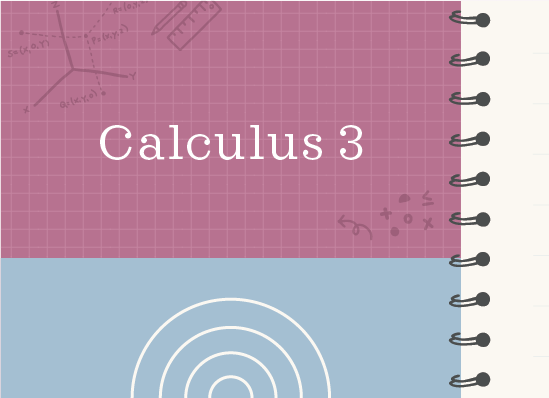Finding volume for triple integrals using spherical coordinates
Volume formula in spherical coordinates
We can use triple integrals and spherical coordinates to solve for the volume of a solid sphere. The volume formula in rectangular coordinates is
???V=\int\int\int_Bf(x,y,z)\ dV???
where ???B??? represents the solid sphere and ???dV??? can be defined in spherical coordinates as
???dV=\rho^2\sin\ d\rho\ d\theta\ d\phi???
Hi! I'm krista.
I create online courses to help you rock your math class. Read more.
To convert in general from rectangular to spherical coordinates, we can use the formulas
???x=\rho\sin???
???y=\rho\sin???
???z=\rho\cos???
???\rho^2=x^2+y^2+z^2???
Remember, rectangular coordinates are given as ???(x,y,z)???, and spherical coordinates are given as ???(\rho,\theta,\phi)???.
In order to find limits of integration for the triple integral, we’ll say that ???\phi??? is defined on the interval ???[0,\pi]??? and that ???\theta??? is defined on the interval ???[0,2\pi]???. Then we only have to find an interval for ???\rho???.
Using triple integrals in spherical coordinates to find volume
Take the course
Want to learn more about Calculus 3? I have a step-by-step course for that. :)
Finding volume given by a triple integral over the sphere, using spherical coordinates
Example
Use spherical coordinates to find the volume of the triple integral, where ???B??? is a sphere with center ???(0,0,0)??? and radius ???4???.
???\int\int\int_Bx^2+y^2+z^2\ dV???
Using the conversion formula ???\rho^2=x^2+y^2+z^2???, we can change the given function into spherical notation.
???\int\int\int_Bx^2+y^2+z^2\ dV=\int\int\int_B\rho^2\ dV???
Then we’ll use ???dV=\rho^2\sin\ d\rho\ d\theta\ d\phi??? to make a substitution for ???dV???.
???\int\int\int_B\rho^2\left(\rho^2\sin\ d\rho\ d\theta\ d\phi\right)???
???\int\int\int_B\rho^4\sin\ d\rho\ d\theta\ d\phi???
Now we’ll find limits of integration. We already know the limits of integration for ???\phi??? and ???\theta???, since they are always the same if we’re dealing with a full sphere, so we get
???\int_0^\pi\int_0^\ d\rho\ d\theta\ d\phi???
Since ???\rho??? defines the radius of the sphere, and we’re told that this sphere has its center at ???(0,0,0)??? and radius ???4???, ???\rho??? is defined on ???[0,4]???, so
???\int_0^\pi\int_0^\ d\rho\ d\theta\ d\phi???
We can use triple integrals and spherical coordinates to solve for the volume of a solid sphere.
We always integrate inside out, so we’ll integrate with respect to ???\rho??? first, treating all other variables as constants.
???V=\int^{\pi}_0\int^{2\pi}_0\frac15\rho^5\sin{\phi}\Big|^{\rho=4}_\ d\theta\ d\phi???
???V=\int^\ d\theta\ d\phi???
???V=\int^\ d\theta\ d\phi???
Now we’ll integrate with respect to ???\theta???, treating all other variables as constants.
???V=\frac{1,024}{5}\int^{\pi}_0\theta\sin{\phi}\Big|^{\theta=2\pi}_\ d\phi???
???V=\frac\ d\phi???
???V=\frac\ d\phi???
Finally, we’ll integrate with respect to ???\phi???.
???V=\frac{2,048\pi}{5}\left(-\cos{\phi}\right)\Big|^{\pi}_0???
???V=-\frac{2,048\pi\cos{\phi}}{5}\Big|^{\pi}_0???
???V=-\frac\right]???
???V=-\frac(1)???
???V=\frac???
???V=\frac???
This is the volume of the region bounded beneath the surface ???x^2+y^2+z^2??? and above the sphere defined by ???B???.






